Icônes de pierre et d'esprit : 10 monuments européens qui façonnent bien plus que des horizons
Bruce Li•May 23, 2025
Les monuments ne font que remplir votre pellicule. Ils renferment des histoires, des identités et des émotions travers les gnrations pour nous aider comprendre qui nous sommes, d’o nous venons et comment nous avons chang.
Pensez la Porte de Brandebourg : pour les touristes, une occasion de prendre des photos. Mais pour un rfugi regardant le Mur de Berlin tomber ct d’elle ? C’est le symbole de la libert et de la runification. Des monuments comme ceux-ci ne sont pas de simples trophs de voyage. Ils deviennent partie intgrante d’histoires personnelles ancres dans des moments de bouleversement, de clbration ou de gurison. Et il n’y a pas que les clbres.
Dans ce guide, nous n’allons pas seulement cocher 10 clbres monuments d’Europe, nous allons explorer ce qu’ils reprsentent vraiment. la fin, vous pourriez ne plus jamais les regarder de la mme manire.

Les Dix Grands Monuments Europens Rimagins
Tour Eiffel, France : Fer, lgance et l’me Parisienne
Lorsque la Tour Eiffel fut annonce la fin des annes 1800, de nombreux Parisiens taient furieux. Ils la trouvaient hideuse une horreur de fer lourdaude qui n’avait pas sa place dans leur belle ville historique.
Cela a dclench une raction locale contre le design moderne et a inspir une vague d’art anti-industriel. Pour certains, la tour est devenue un symbole de tout ce qu’ils pensaient que Paris perdait. Des crivains et artistes comme Guy de Maupassant ont mme sign des pitions contre elle. Mais Gustave Eiffel croyait au projet, et son quipe a persvr malgr les critiques et les dfis de construction.
La tour ne devait rester que 20 ans. Aujourd’hui, plus d’un sicle plus tard, c’est le symbole de Paris. L’une des histoires les plus intressantes est qu’Eiffel avait fait construire un petit appartement au sommet. C’est rel, pas un mythe. Il l’utilisait pour recevoir des invits et mener des expriences. Vous pouvez encore le voir aujourd’hui si vous visitez.
Pourtant, le temps a le pouvoir de changer les mentalits. Ce qui a commenc comme une monstrusit temporaire est maintenant un lment fier de l’identit parisienne. Un rappel que l’innovation et la beaut ne ressemblent pas toujours ce que nous attendons d’elles au premier abord.
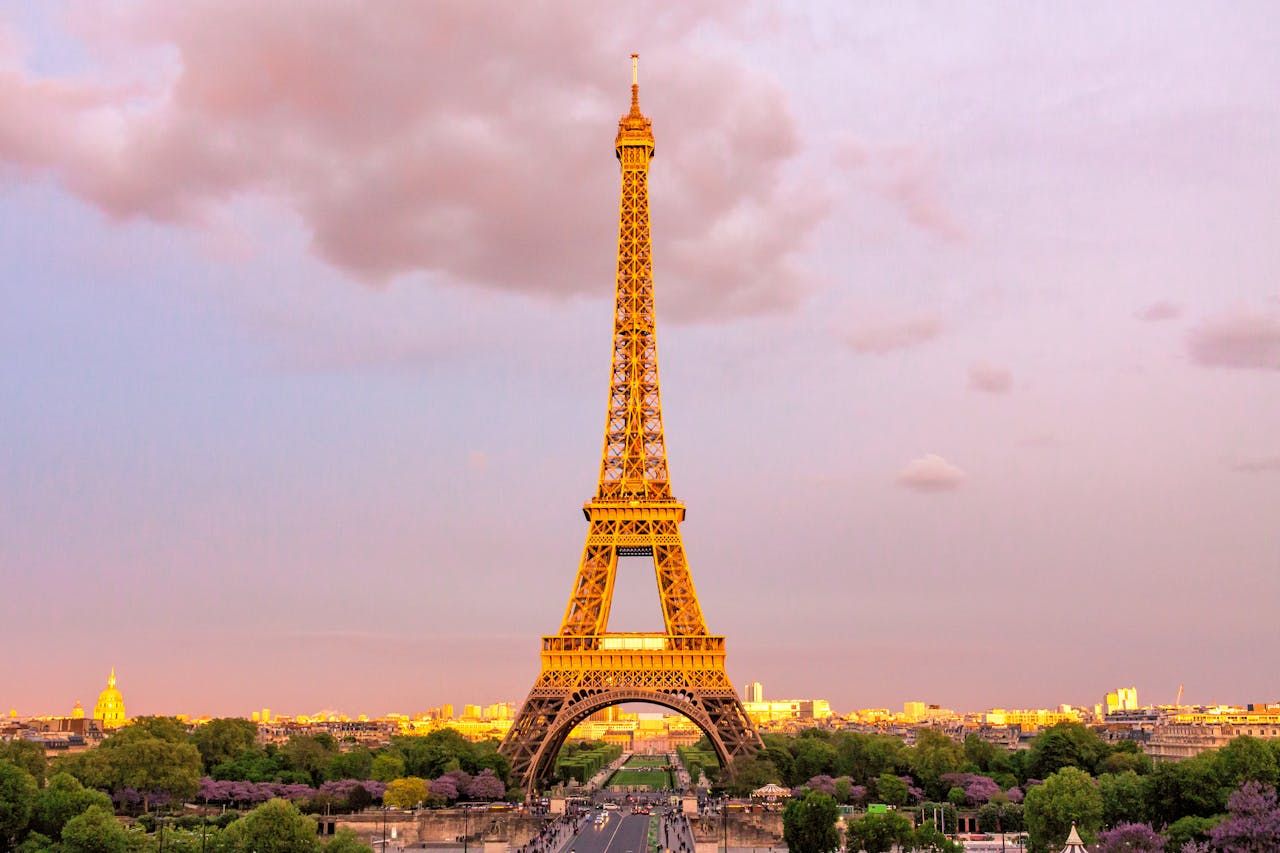
Si vous visitez bientt et souhaitez une vue plus tranquille de la tour, vitez les foules au Trocadro et dirigez-vous vers la Rue de lUniversit. C’est un endroit paisible offrant l’une des vues les plus photogniques de la Tour Eiffel.
Conseil de pro : Vous voulez des cartes, des rservations et des outils de traduction porte de main pendant que vous explorez Paris ? Prenez un essai gratuit d’eSIM Yoho Mobile et obtenez un accs instantan aux donnes mobiles dans la plupart des pays. Pas de carte SIM, pas de contrat juste une configuration rapide et vous tes en ligne en quelques minutes. Si vous souhaitez obtenir votre forfait eSIM aprs, utilisez le code YOHO12 la caisse pour une rduction de 12 % !
Colise, Italie : Sang, Sable et Empire
Lorsque vous entrez pour la premire fois dans le Colise Rome, il est difficile de ne pas ressentir un trange mlange de respect et de malaise. C’est un stade de pierre immense, ouvert sur le ciel, et vous pouvez presque entendre le rugissement lointain d’une foule. C’tait autrefois le cur du divertissement et du contrle romain.
Qui combattait rellement dans l’arne ? Pas seulement des gladiateurs comme vous les voyez dans les films. Beaucoup taient des esclaves, des prisonniers de guerre ou des criminels condamns. Certains taient entrains pour combattre ; d’autres n’avaient pas le choix. Quelques-uns se portaient mme volontaires, esprant gagner gloire ou argent. Et des animaux comme des lions, des ours et des lphants taient amens des quatre coins de l’empire pour tre chasss ou utiliss dans des combats brutaux.
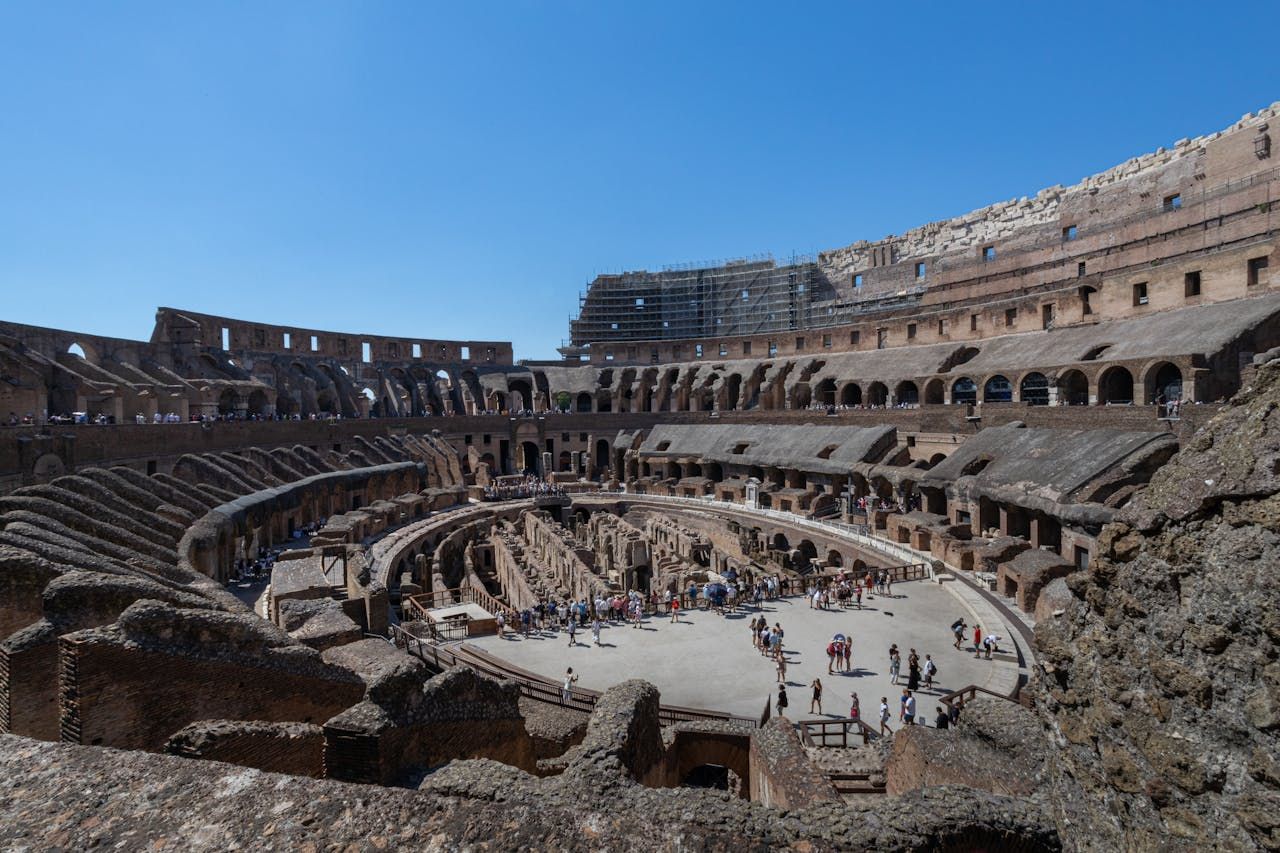
Il est tentant de comparer le Colise aux stades de sport modernes. Les deux sont des endroits o les gens se rassemblent pour tre divertis. Mais la version romaine tait beaucoup plus sanglante. L o nous acclamons les touchdowns et les buts, les anciens Romains regardaient des gens se battre mort.
Il y a aussi ce que l’on ne voit pas tout de suite : l’hypoge, un vaste complexe souterrain sous le sol de l’arne avec des tunnels, des cages, des ascenseurs et des trappes. Les gladiateurs et les animaux y attendaient dans l’obscurit avant d’tre hisss dans l’arne. Il y avait mme des ascenseurs spciaux assez solides pour soulever des lphants. Tout cela tait gr par une petite arme d’esclaves, d’ingnieurs et de planificateurs.
En fin de compte, le Colise est plus rappel comme un symbole de la puissance romaine, soutenu par une ingnierie impressionnante, que comme un lieu de spectacles violents. Et d’une manire ou d’une autre, plus de deux mille ans plus tard, ce mlange de spectacle et de contrle rsonne encore dans les lieux o nous nous rassemblons pour nous divertir.
Big Ben, Royaume-Uni : Gardien du Temps des Empires
La plupart des gens appellent toute la tour Big Ben, mais Big Ben n’est en fait que la cloche l’intrieur. La tour s’appelle la Elizabeth Tower, renomme en 2012 pour honorer le Jubil de Diamant de la Reine Elizabeth II. Alors, la prochaine fois que quelqu’un la pointera du doigt en disant : C’est Big Ben, vous pourrez sourire et laisser tomber cette petite anecdote amusante.
La cloche elle-mme est une bte (environ 13,7 tonnes) et a une note distincte de Mi naturel, mme si son histoire a t un peu mouvement. La premire cloche s’est fissure lors des essais, et la seconde s’est fissure peu de temps aprs avoir t accroche. Mais au lieu de la refondre, ils l’ont simplement fait pivoter et ont lim autour de la fissure. Cette mme cloche fissure sonne encore aujourd’hui.
L’horloge elle-mme est une merveille d’ingnierie, clbre pour sa prcision grce une astuce astucieuse : de minuscules poids comme de vieux pennies sont ajouts au pendule pour maintenir l’heure prcise. Elle tourne depuis plus de 150 ans, mme pendant le Blitz de la Seconde Guerre Mondiale, lorsque des btiments voisins ont t bombards. Big Ben a continu tourner et sonner. Ce son est devenu un symbole d’espoir et de rsilience pour les Londoniens, un rappel que mme lorsque tout s’effondrait, certaines choses continuaient.
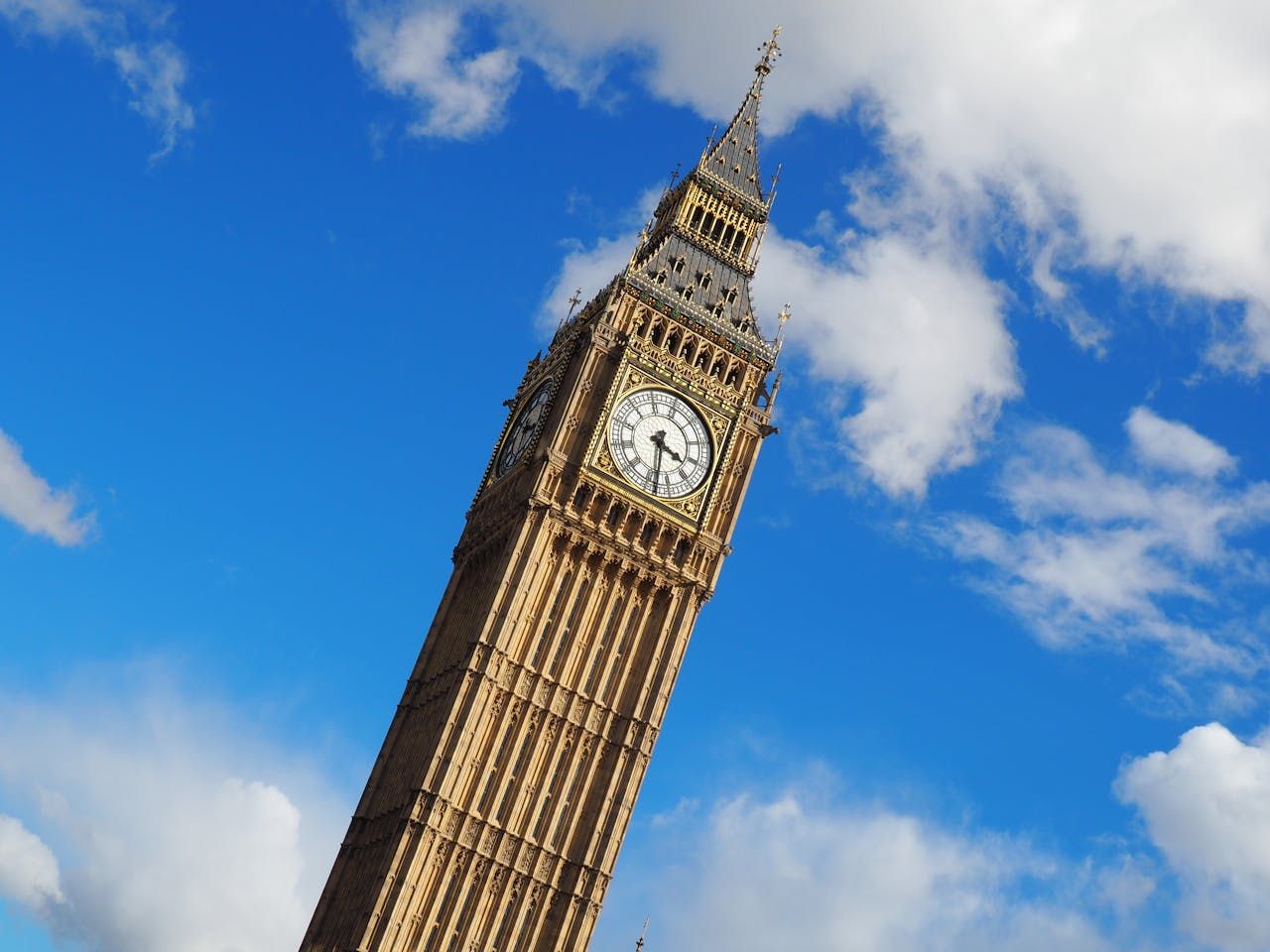
Mme si vous ne pouvez pas entrer dans la tour (sauf si vous tes un rsident du Royaume-Uni avec une autorisation spciale), il existe d’excellents endroits pour la voir qui ne sont pas envahis par les touristes. L’un de mes prfrs est la petite tendue de verdure tranquille prs des jardins du pont de Westminster. Cela vous donne une vue parfaite de la tour et du Parlement, sans les perches selfie et les foules.
Donc, en bref, Big Ben n’est pas la tour. C’est une cloche clbrement fissure qui a sonn travers l’histoire, des clbrations royales Londres en temps de guerre, et elle continue de sonner fort.
Le Louvre, France : L l’Art Rencontre l’Empire
Lorsque vous traversez le Louvre aujourd’hui, il est difficile de ne pas sentir le poids de l’histoire, et une grande partie de cela vient de Napolon Bonaparte. Au dbut des annes 1800, il avait de grands rves pour le muse. Il ne voulait pas seulement que ce soit une collection d’art, il voulait que ce soit le cur d’un empire culturel. En fait, il l’a mme renomm le Muse Napolon en 1803.
Les armes de Napolon ont ramen des trsors de toute l’Europe et d’ailleurs : des peintures de Raphal et Titien, des sculptures comme la Victoire de Samothrace et la Vnus de Milo. Chaque pice tait destine montrer la puissance et la sophistication de la France.
Mais Napolon ne s’est pas arrt l’art. Il a galement remodel le Louvre lui-mme. Il a fait appel des architectes pour redessiner des parties du palais, construisant de nouvelles ailes et de grandes cours qui mettraient en valeur la collection croissante avec style. L’aile Napolon et la Cour Napolon (toujours des parties majeures du muse) sont issues de cette poque.
Aprs la chute de Napolon en 1815, de nombreuses uvres d’art voles ont t rendues leurs pays d’origine. Pourtant, le Louvre en a conserv beaucoup, et avec le temps, il n’a cess de grandir. L’histoire du muse est mle des questions plus vastes sur le colonialisme et la proprit culturelle. De nombreuses pices du Louvre proviennent d’poques o des pays comme la France prenaient plus que de simples territoires la culture. Cela a conduit des dbats en cours sur la question de savoir si certains des trsors du Louvre devraient tre restitues.
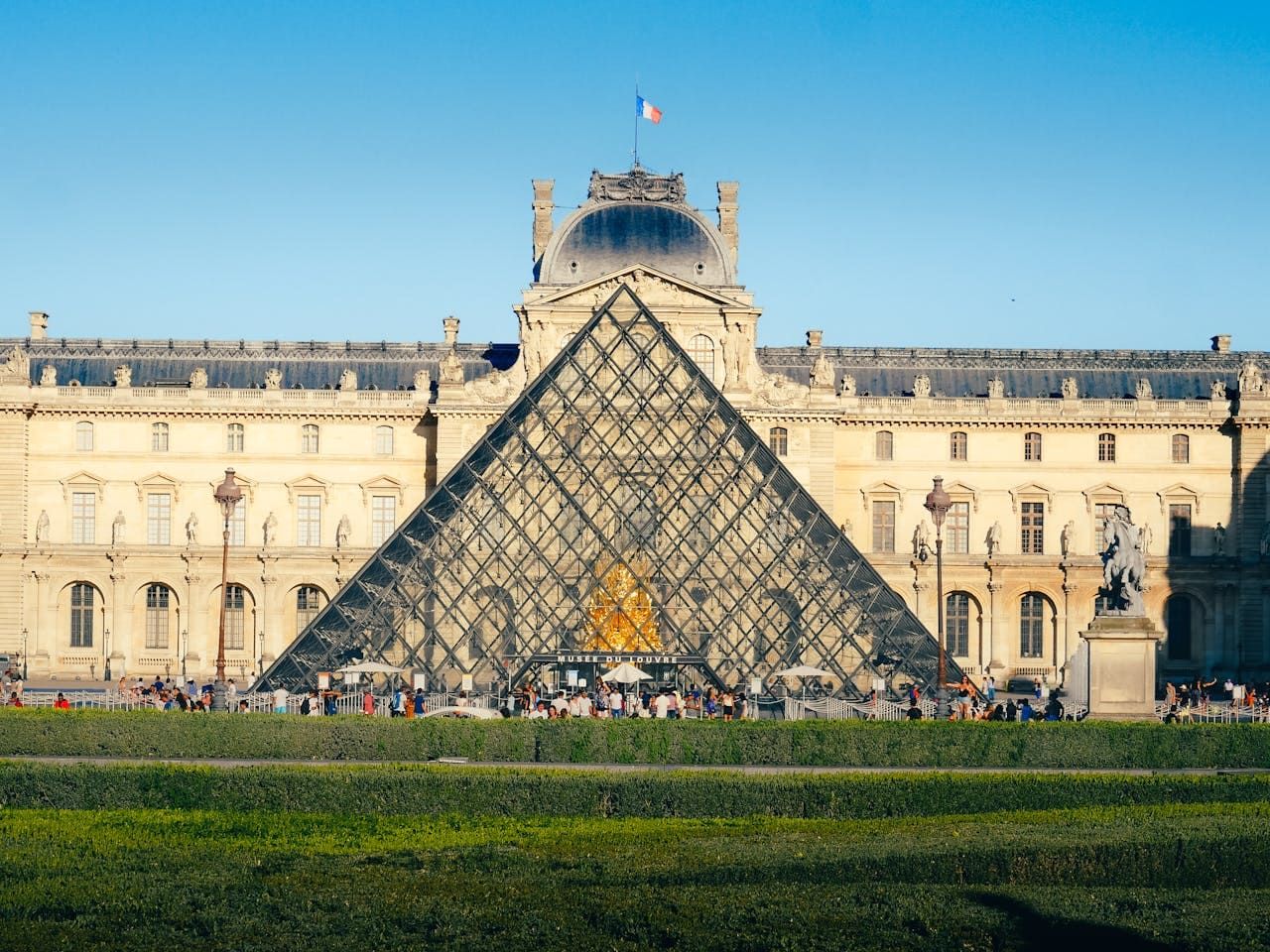
Si vous prvoyez de visiter, commencez par l’tage suprieur et descendez. La plupart des gens se prcipitent vers les pices clbres du rez-de-chausse, donc de cette faon, vous pouvez d’abord explorer les recoins plus calmes, souvent plus fascinants, du muse.
Acropole d’Athnes, Grce : L la Dmocratie est Ne dans le Marbre
L’Acropole d’Athnes est le lieu o la dmocratie a fait ses premiers vrais pas. Les temples de marbre y ont connu la guerre, le feu, la reconstruction, et des gnrations de personnes essayant de s’accrocher ce qu’ils reprsentaient.
En 480 avant J.-C., les forces perses ont dtruit l’Acropole. Cela aurait pu tre la fin. Mais les Athniens ne l’ont pas seulement rpare. Ils l’ont reconstruite plus grande et plus audacieuse, avec le leader Pricls menant une renaissance qui ne concernait pas seulement la pierre, mais les ides : la dmocratie, l’art et la fiert de leur ville.
La plupart des visiteurs se prcipitent vers le Parthnon (et oui, c’est incroyable) mais si vous marchez un peu plus loin, vous trouverez l’rechthin, l’un des btiments les plus discrtement puissants de l’Acropole. Construit entre 421 et 406 avant J.-C., il abritait plusieurs dieux, dont Athna et Posidon, et il est profondment li aux mythes fondateurs d’Athnes, comme la bataille lgendaire entre ces deux dieux pour devenir le protecteur de la ville.
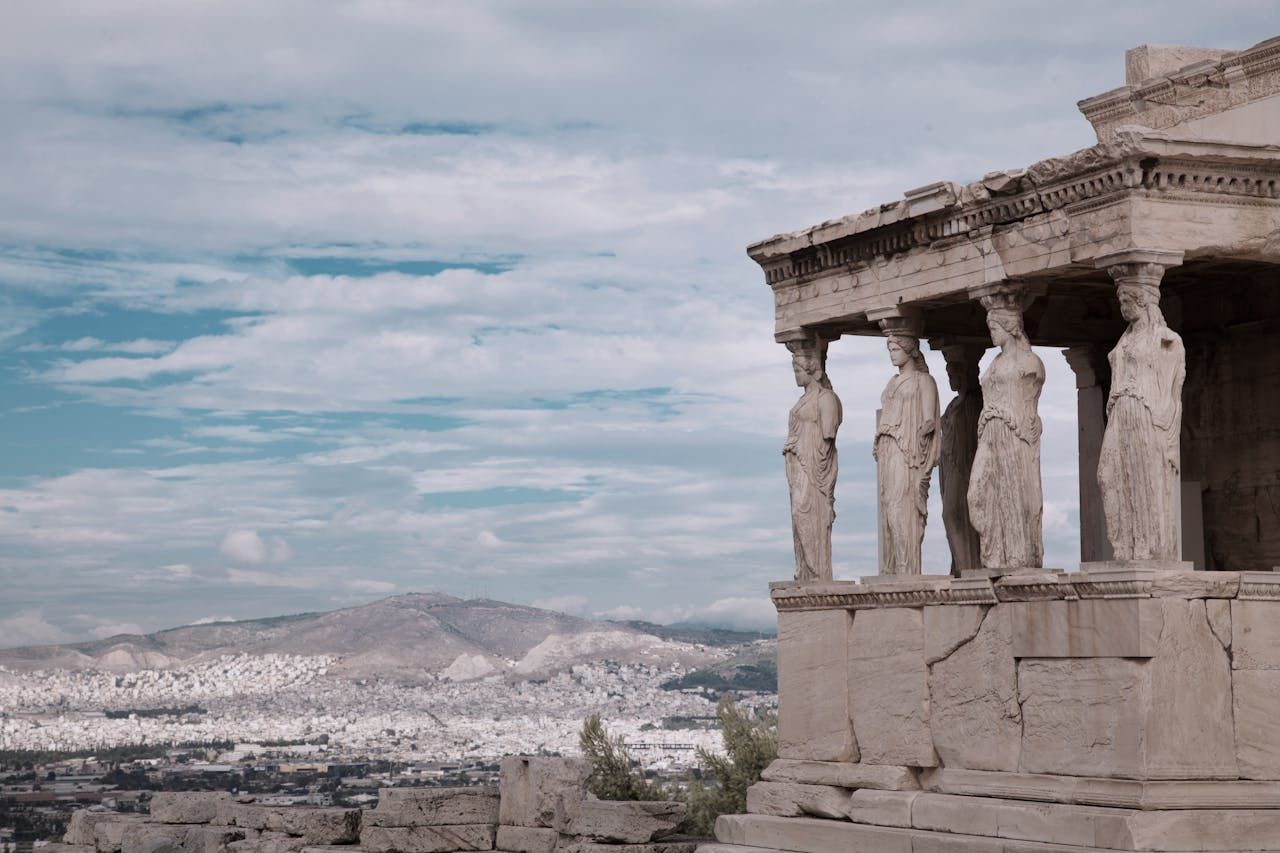
L’rechthin est surtout clbre pour son Porche des Caryatides, six femmes de pierre gracieuses qui soutiennent le toit la place de colonnes ordinaires. Aujourd’hui, les vraies Caryatides sont protges l’intrieur du Muse de l’Acropole, l’exception d’une qui se trouve toujours au British Museum, ce qui maintient le dbat sur le patrimoine culturel vivant et non rsolu.
Chaque dtail de ce temple raconte une histoire, depuis l’olivier qu’Athna aurait offert la ville, jusqu’aux marques sur la roche qui auraient t laisses par le trident de Posidon. L’rechthin n’est peut-tre pas le clou du spectacle, mais c’est l que la mythologie, l’architecture et le sens se rejoignent d’une manire incroyablement humaine.
Tour Penche de Pise, Italie : L’Inclinaison Qui a Lanc Mille Photos
La Tour Pench de Pise n’tait pas cense pencher. Lorsque la construction a commenc en 1173, elle devait simplement tre un clocher pour la cathdrale voisine. Mais les constructeurs ne savaient pas que le sol tait trop mou (fait d’argile, de sable et de coquillages) et ils n’ont creus que trois mtres de profondeur pour les fondations. Au moment o ils sont arrivs au troisime tage, toute la structure a commenc s’incliner.
Sa construction s’est arrte et a repris au cours des 200 annes suivantes, en partie cause des guerres. Curieusement, ces pauses ont aid. Le sol a eu le temps de se tasser, et la tour ne s’est pas effondre. Plus tard, les constructeurs ont essay de corriger l’inclinaison en rendant un ct des tages suprieurs plus haut que l’autre, mais cela n’a fait qu’empirer les choses. Finalement, ils l’ont acheve en 1372 avec huit tages et une hauteur totale d’environ 56 mtres.
Au fil des sicles, l’inclinaison n’a cess de s’aggraver. un moment donn, elle penchait de plus de cinq mtres par rapport au centre. Mais la fin des annes 1900 et au dbut des annes 2000, des ingnieurs sont intervenus et ont russi rduire l’inclinaison d’environ 40 centimtres, ce qui a contribu la maintenir stable tout en conservant son inclinaison emblmatique.
Ce qui a commenc comme une erreur architecturale est l’un des monuments les plus photographis au monde. Les habitants de Pise en plaisantent tout le temps, l’appelant une beaut pench et riant de son refus de se tenir droite. Elle est devenue une partie de la personnalit de la ville.
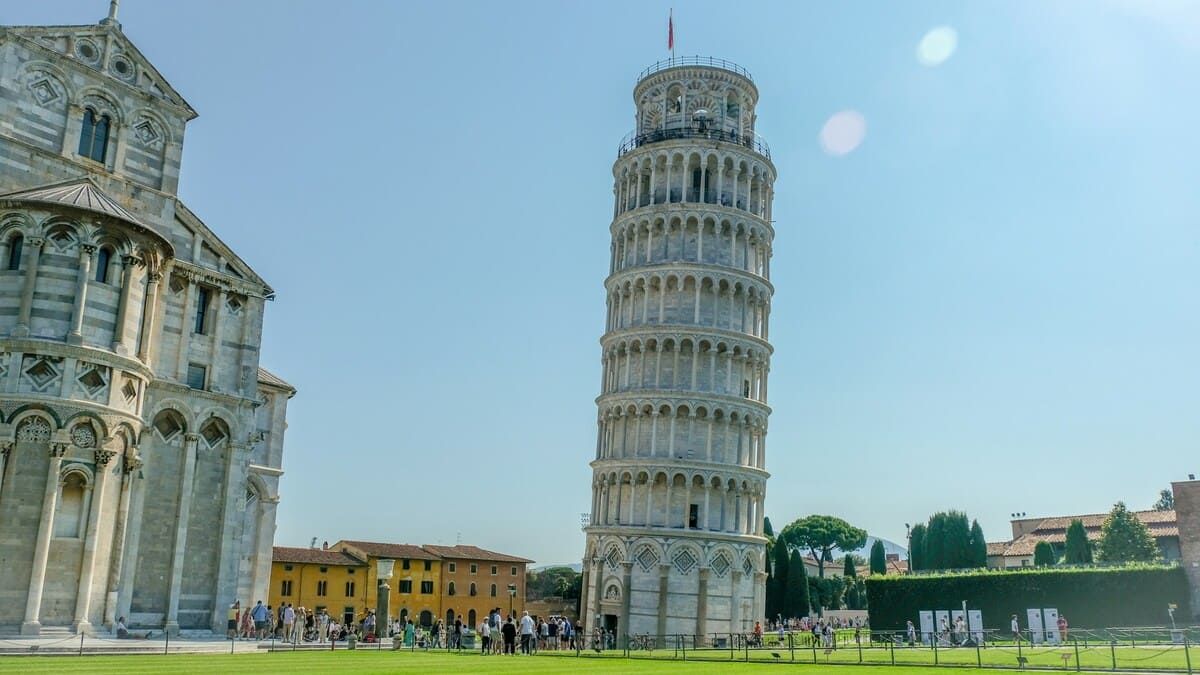
Photo par Pauline Lu sur Unsplash
Si vous visitez, ne manquez pas le Baptistre de Pise, juste ct. Entrez et dites quelque chose. Vous entendrez votre voix rsonner sous le plafond en forme de dme de la manire la plus magique. C’est une surprise moins connue qui ajoute une toute nouvelle dimension cette place historique.
Chteau de Neuschwanstein, Allemagne : Fantaisie et Fragilit
Le Chteau de Neuschwanstein ressemble quelque chose tout droit sorti d’un conte de fes. C’est exactement ce que le roi Louis II de Bavire avait en tte lorsqu’il a commenc sa construction en 1869. Il n’tait pas intress par la construction d’une forteresse militaire ou d’une rsidence royale au sens habituel. Au lieu de cela, il voulait une retraite fantaisiste inspire par les lgendes mdivales et les opras dramatiques de son compositeur prfr, Richard Wagner.
Perch sur une colline rocheuse dans les Alpes Bavaroises, l’emplacement est magnifique, mais il n’tait pas facile d’y construire. Les ouvriers ont d creuser profondment dans la roche pour faire une fondation suffisamment solide pour supporter le poids du chteau. La progression a t trs lente, en partie cause de son emplacement isol, mais aussi parce que Louis tait extrmement mticuleux. La premire partie acheve fut le corps de garde, o il sjourna pendant que le reste du chteau tait encore en construction. En 1884, il vivait dans le btiment principal partiellement achev. Certaines sections, comme la grande tour et une aile, ne furent jamais termines.
Louis est mort en 1886 dans des circonstances mystrieuses, et peu de temps aprs, le chteau a ouvert au public. Aujourd’hui, c’est l’un des endroits les plus vists d’Allemagne.
Malgr son aspect mdival, Neuschwanstein tait tonnamment moderne pour l’poque. Il disposait du chauffage central, de l’eau courante, de toilettes chasse d’eau et mme de tlphones. l’intrieur, les pices sont dcores de fresques labores reprsentant des scnes des opras de Wagner. Louis l’imaginait comme un lieu pour vivre ses fantasmes mdivaux avec une Salle du Trne et une Salle des Chanteurs qui taient plus axes sur le faste que sur la praticit.
Alors que les visiteurs voient Neuschwanstein comme un vrai chteau, les habitants le dcrivent plus comme un dcor de thtre qu’un monument historique. Il a t construit au XIXe sicle, aprs tout, pas au Moyen ge, et il n’a pas les mmes racines historiques profondes que, par exemple, le chteau de Hohenzollern, qui remonte au XIe sicle et fut la demeure de gnrations de vrais souverains.
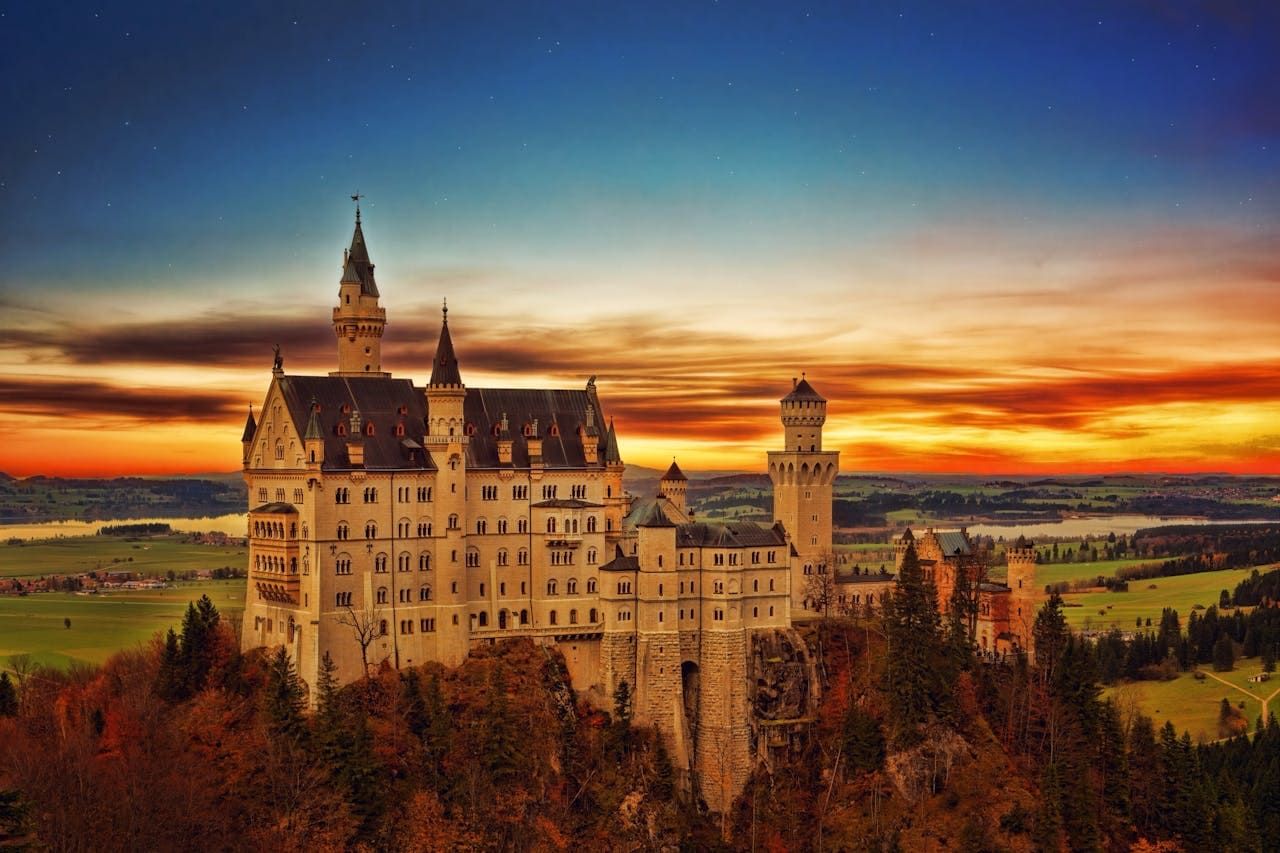
Nmoins, Neuschwanstein est devenu mondialement clbre grce Disney, qui l’a utilis comme source d’inspiration pour le chteau de la Belle au bois dormant. Et si le monde fantastique de Louis lui a peut-tre cot son trne et l’a endett, son rve perdure dans l’un des chteaux les plus emblmatiques du monde.
Sagrada Famlia, Espagne : La Gomtrie Divine de Gaud
La Sagrada Famlia est en construction depuis plus de 140 ans. Ce n’est pas seulement une histoire de retards, mais une histoire de dvotion, de patience et de vision.
Lorsque Gaud a pris la tte de la Sagrada Famlia en 1883, il n’a pas seulement dessin des plans, il y a vers son me. Il a consacr les 15 dernires annes de sa vie entirement cette basilique, la faonnant avec un mlange de formes naturelles, de symbolisme spirituel et de prcision mathmatique.
Mais lorsqu’il est mort en 1926, moins d’un quart du projet tait achev.
Au fil des dcennies, la construction s’est poursuivie, entirement finance par des dons privs et les billets d’entre, et non par les gouvernements ou les entreprises. La Guerre Civile espagnole a dtruit de nombreux plans de Gaud, mais des architectes et des artistes les ont reconstitus l’aide de vieilles photos et de croquis. Aujourd’hui, la modlisation 3D et les outils de haute technologie aident faire avancer le projet plus rapidement que jamais.
Certaines parties de la basilique, comme les faades de la Nativit et de la Passion, sont acheves depuis des dcennies, et l’intrieur a finalement t consacr en 2010. Les dernires tours, dont une ddie la Vierge Marie, se sont galement leves. L’objectif est d’achever la basilique d’ici 2026, exactement 100 ans aprs la mort de Gaud, bien que certains dtails puissent dpasser cette date.
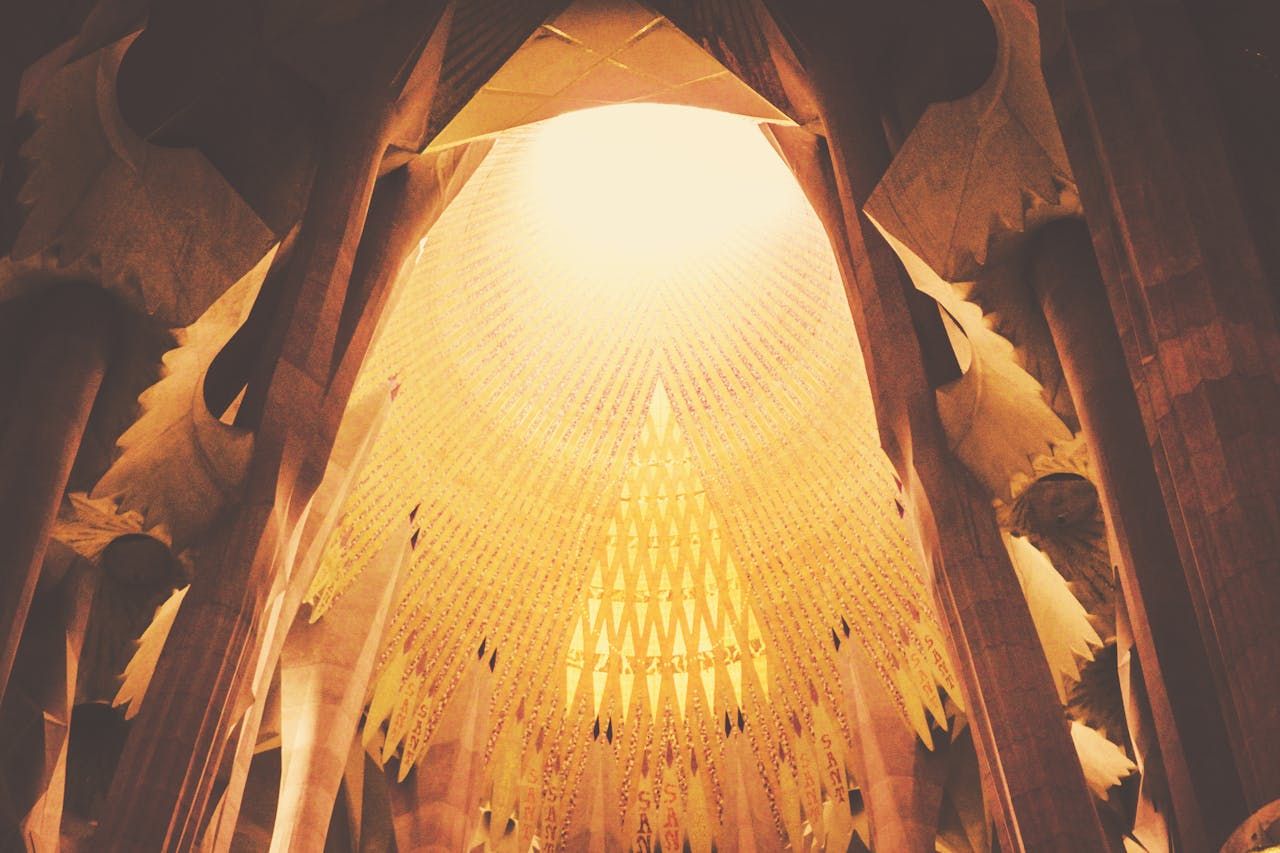
Mais ce qui rend cet endroit vivant n’est pas seulement l’architecture, mais les habitants qui viennent encore chaque semaine prier. Mme avec les touristes prenant des photos, la crypte en dessous reste tranquillement sacre. Ce n’est pas termin. Mais c’est peut-tre l’essentiel. La foi, comme la Sagrada Famlia, n’est pas quelque chose que l’on achve ; c’est quelque chose que l’on continue de construire, un jour, une pierre, une prire la fois.
Stonehenge, Royaume-Uni : Rituel, Roche et Rvolution
Stonehenge est l’un de ces endroits qui capturent votre imagination. C’est un cercle de pierres gantes, certaines traes de plus de 240 km, dresses au milieu de la campagne anglaise. Construit par tapes entre 3000 et 1520 avant J.-C., il continue de soulever de grandes questions : Qui l’a construit ? Comment ? Et pourquoi ?
Au fil des sicles, les gens ont propos toutes sortes de rponses. Au Moyen ge, certains croyaient que le sorcier Merlin avait apport magiquement les pierres d’Irlande. Des thories ultrieures l’attribuaient aux Romains ou aux Danois. Aujourd’hui, les archologues dsignent les communauts nolithiques (habitants ayant des comptences et un objectif, pas des esclaves) qui l’ont probablement construit en utilisant une ingnierie astucieuse et le travail d’quipe.
Mais quoi servait Stonehenge ? Cela fait toujours l’objet de dbats. Certains pensent que c’tait un calendrier immense, align sur le soleil. Pendant le solstice d’t, le lever du soleil s’aligne parfaitement avec la Pierre du Talon. D’autres y voient un lieu sacr, peut-tre pour honorer les anctres, enterrer les morts, ou tenir des crmonies lies aux saisons ou aux toiles.
La vrit est que nous ne le saurons peut-tre jamais avec certitude, et cela fait partie de son attrait. Sans archives crites, le mystre continuera d’exister. C’est pourquoi les scientifiques, les conteurs et les visiteurs continuent de revenir.
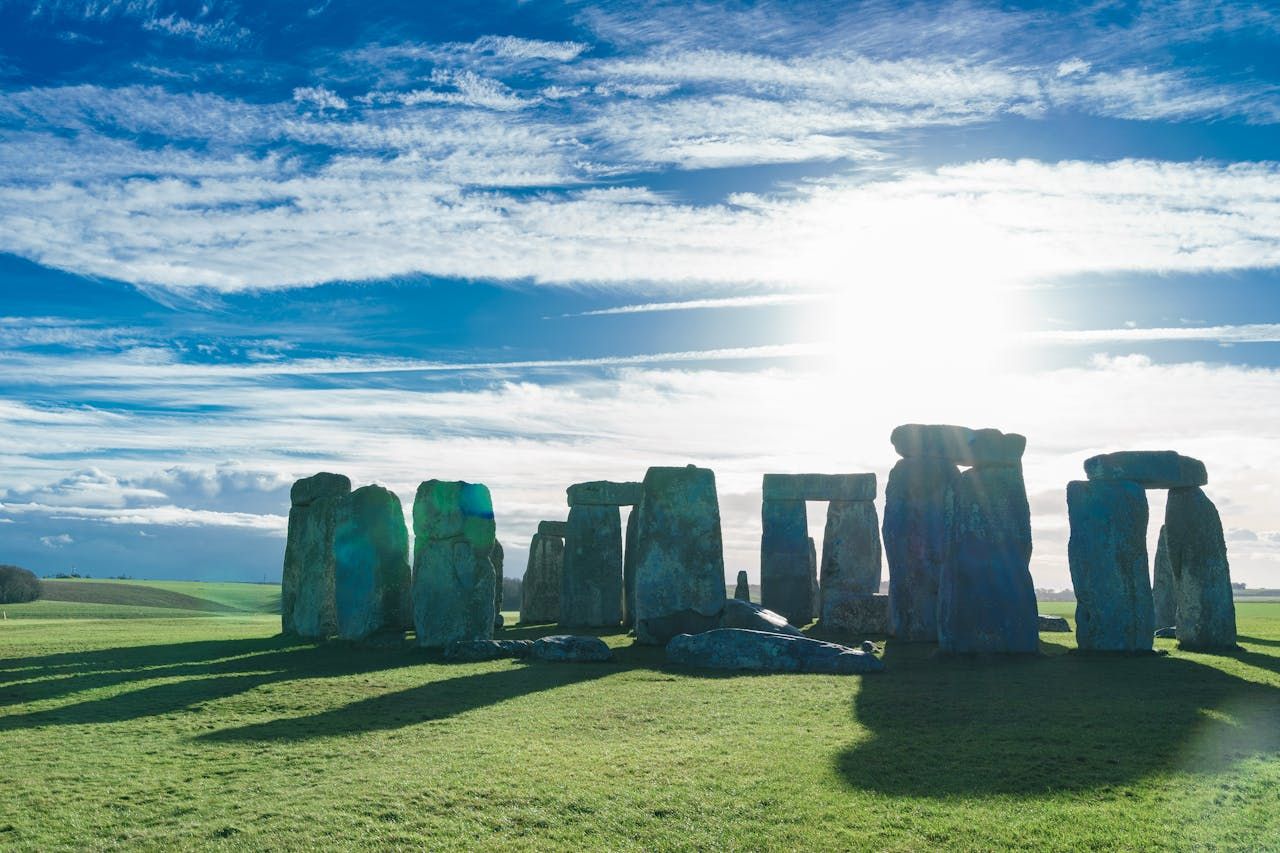
Aujourd’hui, Stonehenge est un lieu o se rassemblent des groupes spirituels modernes, comme les druides et les paens, surtout pendant le solstice d’t. Ils clbrent, organisent des crmonies et poursuivent d’anciennes traditions lies l’alignement des pierres avec le soleil. une courte distance se trouve Woodhenge, un site moins connu avec des poteaux en bois disposs en cercles. On pense qu’il avait un but crmoniel similaire. Comme il est plus calme et moins bond que Stonehenge, le visiter peut offrir une exprience plus paisible et personnelle, tout en vous connectant ce monde ancien.
Porte de Brandebourg, Allemagne : Arc de Triomphe, Mur de Division
Vous pouvez sentir le poids de l’histoire lorsque vous vous tenez devant la Porte de Brandebourg. Elle a t vole, dispute, ferme et clbre. D’une certaine manire, elle possde sa propre identit marque par chaque tournant de l’histoire de l’Europe.
Cela a commenc la fin des annes 1700. Le roi Fdric-Guillaume II de Prusse voulait quelque chose de puissant pour marquer l’entre de Berlin, il a donc demand l’architecte Carl Gotthard Langhans de concevoir une porte inspire des Propyles d’Athnes. Ce qui a pris vie fut un chef-d’uvre noclassique : douze hautes colonnes doriques, cinq passages, dont un rserv uniquement la royaut.
Au sommet se trouvait la Quadrige, un char tir par quatre chevaux, conduit par la desse de la paix. Mais la paix n’a pas dur. En 1806, Napolon est entr dans Berlin et a ramen la statue Paris comme un trophe. Aprs sa dfaite Waterloo en 1815, la sculpture est revenue chez elle, maintenant redessine comme un symbole de victoire.
Puis vinrent les bombes de la Seconde Guerre Mondiale. La porte fut gravement endommage mais rpare. Pourtant, les choses n’taient plus les mmes. Lorsque le Mur de Berlin fut rig en 1961, la Porte de Brandebourg se dressait juste ct, enferme dans un no man’s land. On ne pouvait pas s’en approcher. Elle devint un tmoin silencieux de la division entre l’Est et l’Ouest.
Un mois aprs la chute du Mur le 9 novembre 1989, la Porte de Brandebourg a rouvert. Les Berlinois de l’Est ont inond les rues, grimpant sur la porte, treignant des inconnus, pleurant, riant. Cela ressemblait au dbut de quelque chose de nouveau. Depuis la runification de l’Allemagne, la porte a t restaure et reprsente dornavant l’unit et la paix, non seulement en Allemagne, mais aussi en Europe.
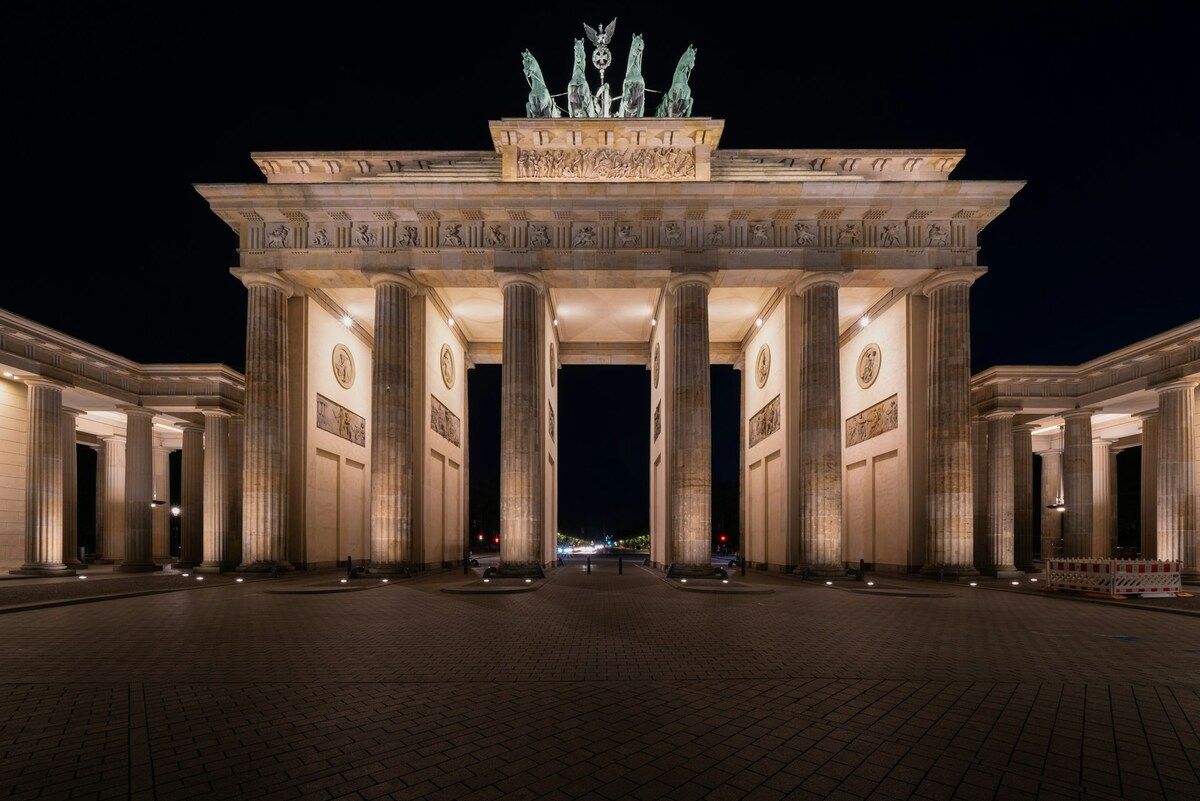
Photo par Claudio Schwarz sur Unsplash
De nos jours, la Porte de Brandebourg est plus qu’une simple opportunit de photo pour touristes ; c’est l que les Berlinois se rassemblent pour des manifestations, des concerts, des dfils de la fiert et les feux d’artifice du Nouvel An. C’est toujours un symbole, mais maintenant il reprsente l’unit et la libert en temps rel, pas seulement dans les manuels scolaires.
Comment les Locaux Interagissent avec Ces Clbres Monuments
Il est facile de considrer ces clbres monuments d’Europe comme des lieux vists uniquement par les touristes. Mais pour les personnes qui vivent proximit, ils ne sont qu’une partie du quartier.
Paris, la Tour Eiffel n’est pas seulement quelque chose photographier. Les locaux apportent des couvertures et des pique-niques dans le parc herbeux en dessous, surtout la nuit lorsque les lumires commencent scintiller. Les amis se runissent, les couples pique-niquent et les familles rient autour de repas faits maison. Certaines personnes voient mme la tour tous les jours depuis leur fentre ou leur toit, elle devient moins un monument et plus comme une vieille voisine.
Athnes, les tudiants s’assoient souvent prs de l’Acropole pendant le djeuner, esquissant les ruines tout en mangeant des sandwichs. Ce n’est pas tellement vu comme un site historique, mais comme une partie de leur rythme quotidien, mlant ducation, crativit et un profond sentiment d’appartenance au lieu. Pour beaucoup, c’est un rappel tranquille de leurs racines.
Berlin, la Porte de Brandebourg a vu beaucoup d’histoire, mais c’est aussi maintenant une scne pour les voix d’aujourd’hui lors de manifestations, de discours publics et d’vnements communautaires. C’est toujours un symbole, mais maintenant il reprsente l’unit et la libert en temps rel, pas seulement dans les manuels scolaires.
Les gens qui habitent juste ct de ces monuments, disent certains, ont cess de les remarquer. L’merveillement s’estompe avec la routine. Mais pour d’autres, la proximit cre une sorte de fiert, comme s’ils faisaient partie de quelque chose de plus grand.
Anecdotes Locales et Faits Moins Connus
-
En t, la Tour Eiffel grandit un peu (jusqu’ quinze centimtres !) C’est parce que la chaleur dilate le fer. Quand il fait plus frais, elle retrouve sa taille habituelle.
-
Il y a un visage cach sur la Faade de la Passion de la Sagrada Famlia Barcelone. Le sculpteur Josep Maria Subirachs a inclus l’image du visage de Jsus d’une manire astucieuse. Elle n’apparat clairement que lorsque vous la regardez sous le bon angle. Cela est bas sur l’histoire de Vronique, qui a essuy le visage de Jsus en chemin vers la croix.
-
Au Baptistre de Pise en Italie, vous pouvez chuchoter d’un ct du dme, et quelqu’un de l’autre ct vous entendra parfaitement. L’acoustique du dme est si prcise, c’est comme une galerie des murmures naturelle.
Vous Ne Visitez Pas Seulement les Monuments Ils Vous Visitent
Visiter des monuments se transforme souvent en une liste de contrle : prendre une photo, la publier, passer autre chose. Mais et si nous voyions ces lieux non pas comme des arrts touristiques, mais comme des moments de connexion personnelle et de sens ?
Au lieu de vous presser, traitez chaque visite comme un petit plerinage. Prenez le temps d’tre vraiment l. coutez les voix du lieu, que ce soit un guide local, une plaque racontant l’histoire de ce qui s’y est pass, ou mme le calme qui rgne autour des vieux murs de pierre. Laissez-vous ralentir et restez un moment pour remarquer les dtails que vous pourriez autrement manquer. Ressentez ce que c’est que d’tre simplement prsent.
Ce faisant, vous commencerez apprendre, non seulement sur le monument, mais sur vous-mme. Et lorsque vous vous ouvrirez cela, voyager deviendra plus qu’un simple dplacement. Cela deviendra une croissance.
